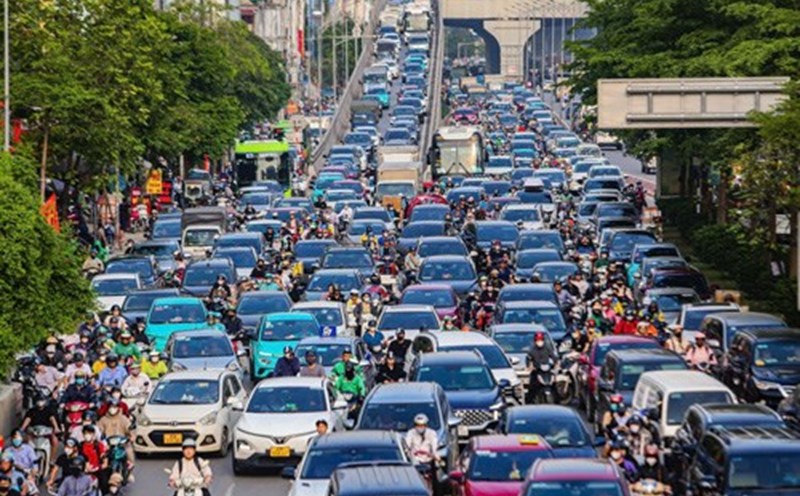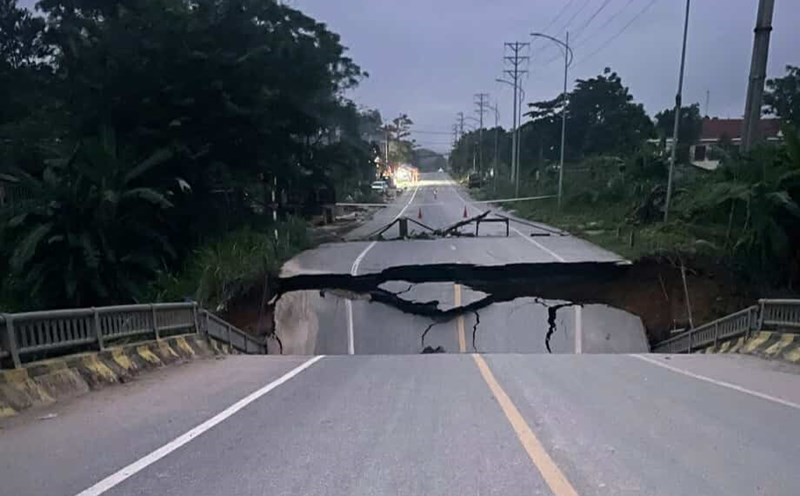Issuing CAFC standards is an urgent requirement
Recent debates surrounding the draft National Technical Regulation on average fuel consumption (CAFC) for cars in Vietnam, especially after concerns from the Vietnam Automobile Manufacturers Association (VAMA), have sparked an important dialogue. VAMA believes that the target of 4.83 liters/100km by 2030 is "too strict", with the risk of "destroying" 96% of traditional gasoline and oil vehicles.
However, recently, the Department of Vehicle Inspection has spoken out that the information that 96% of gasoline and oil-powered vehicles must stop being sold in Vietnam by 2030 is incorrect and causes misunderstanding. Currently, the draft standard on fuel consumption is only in the process of collecting opinions, while VAMA has officially expressed support for the goal of an average fuel consumption of 4.83 liters/100km by 2035.
According to the forecast, Vietnam will be one of the countries most severely affected by climate change and global warming. Although there is still much controversy about the impact of traffic participation on the air environment, it is undeniable that this is still one of the main causes of pollution.
According to statistics, air pollution seriously affects people's health, and causes economic losses of about 13 billion USD per year. In particular, children and the elderly are the most severely affected.
Corporate Average Fuel Economy (CAFE) is not a new concept. The United States has pioneered the application of CAFE since 1975, half a century ago, after the oil crisis. The European Union has had voluntary agreements since the late 1990s before issuing mandatory regulations on CO2 emission limits for new vehicles from 2009.
Setting a goal for 2030 is not an unexpected step, but a necessary effort to catch up with the general trend of the world and the region, avoiding Vietnam becoming a "lowland" of old automobile technologies, consuming fuel and causing pollution.
The current CAFC standard does not affect current vehicles in circulation
According to the draft CAFC Standard, the consumption of 4.83 liters/100km is not the "ceiling" as many people mistakenly believe. The target fuel consumption of each model also depends on the volume of that model. For large vehicles, the target fuel consumption will be calculated to be higher than the above 4.83 liters/100km.
In addition, the consideration of the standard compliance level will not be based on each car model, but will be calculated on the total number of new cars sold by each brand. That means that even if a car model consumes more fuel than the set target, the car company can still meet the standards if it sells many fuel-efficient cars to compensate for the "fuel-powered" car model.
When manufacturing and trading models with low fuel consumption, in addition to meeting CAFC standards, the automaker also creates a quantity of fuel-efficient "credits" and is allowed to transfer this quantity of credits to other automakers. On the other hand, car manufacturers with average fuel consumption exceeding the target can continue to sell car models that are favored by their customers, after receiving the transfer of credits.
CAFC standards will not take away from the diversity of car models on the market. automakers can still produce high-performance vehicles if consumers have a need and can meet CAFC standards by launching more fuel-efficient models, or receiving receipts from other vehicles.
Automotive experts also believe that a vehicle that meets fuel economy standards means consumers will spend less money on gasoline and oil throughout their life cycle. This is a direct and clear economic benefit.
In fact, CAFC standards do not prohibit the production or use of vehicles using traditional gasoline and oil. Consumer choice is not affected, but becomes richer. CAFC standards will open up a more fair playground, where consumers have more access to clean and efficient technologies, mastering the choice for a sustainable future.
Reducing fossil fuel consumption will directly improve air quality, reduce respiratory diseases and contribute to Vietnam's commitment at COP26 to achieve net emissions of "0" by 2050. Consumers still have the right to choose the car line that suits their needs, from sedan, hatchback to SUV, but those will be more efficient and environmentally friendly choices.
The issuance of CAFC standards is an urgent requirement today for Vietnam to participate in the global playground, to fulfill the Government's green transformation commitment and to ensure a better living environment for future generations.
The CAFC regulation does not affect currently operating gasoline/diesel vehicles but only affects newly imported assembled production vehicles. Therefore, it is not possible to say that the new regulation will terminate 96% of traditional gasoline/diesel vehicles. On the contrary, Vietnam's draft CAFC standard also has a much higher protection for traditional gasoline/diesel vehicles than the superpowers that produce these types of vehicles such as Japan and South Korea.
The CAFC regulation is beneficial for society, consumers and a country lagging behind like Vietnam in developing the automobile industry, creating a competitive advantage with the powers that produce traditional gasoline/diesel vehicles.
According to Mr. Le Hoai Nam, Deputy Director of the Environment Department (Ministry of Agriculture and Environment): It is necessary to clearly understand that vehicles manufactured before 2017 can still participate in traffic in Hanoi and Ho Chi Minh City, provided that they meet the appropriate standard level of level 1 or level 2 due to limited engine technology of the vehicle during this period. In the coming time, the Ministry of Agriculture and Environment will continue to research and propose to the Prime Minister and the Government specific measures to control emissions from old vehicles, contributing to improving air quality in Hanoi, Ho Chi Minh City and other major cities".











